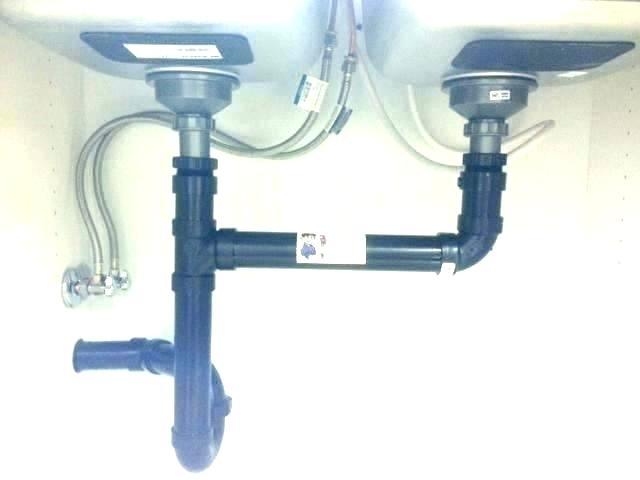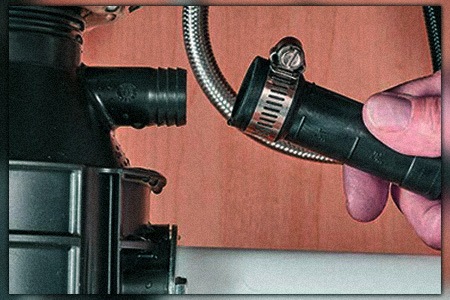Just how do you actually feel about Why Is ?

Waste disposal unit are essential kitchen devices that assist in dealing with food waste effectively. Nevertheless, a dripping garbage disposal can be an aggravating and untidy trouble to deal with. Luckily, many leaks can be dealt with conveniently with a couple of simple actions. In this article, we will review just how to fix a leaking waste disposal unit successfully.
Intro
Garbage disposals are mounted under kitchen sinks and are made to shred food waste into smaller pieces, allowing it to go through the plumbing system quickly. While these devices are generally reputable, leakages can happen gradually due to deterioration, loose links, or damage to the unit.
Step-by-Step Guide to Dealing With a Dripping Waste Disposal Unit
Turn Off the Power
Before trying any repair work, make sure that the power to the garbage disposal system is switched off to avoid the risk of electric shock.
Locate the Leak
Recognize the exact place of the leakage and determine the cause
Tighten up Connections
Make use of a wrench to tighten any loose links in between the disposal system and the pipes system.
Replace Seals or Gaskets
If the leak results from worn seals or gaskets, get rid of the old parts and change them with brand-new ones.
Patching Cracks or Holes
For splits or holes in the disposal unit, usage epoxy or an ideal patching material to secure the broken location.
Determining the Resource of the Leak
Prior to attempting to repair a dripping garbage disposal, it is important to determine the source of the leak. This can generally be done via aesthetic assessment or by conducting straightforward examinations.
Visual Inspection
Check the garbage disposal device very carefully for any indicators of water leakage. Pay very close attention to locations around seals, gaskets, and connection factors.
Checking for Leaks
One method to examine for leaks is by running water with the disposal unit and checking for any kind of visible indicators of leakage.
Typical Sources Of Leaks in Trash Disposals
Worn Seals and Gaskets
Seals and gaskets play a critical duty in preventing water from dripping out of the garbage disposal. In time, these elements can degrade, causing leaks around the disposal unit.
Loose Connections
The connections in between the waste disposal unit and the plumbing system can become loosened gradually, triggering water to leakage out throughout operation.
Cracks or Holes in the Disposal Device
Physical damages to the waste disposal unit, such as fractures or openings in the housing, can additionally cause leakages.
Tools and Materials Needed for Taking Care Of a Dripping Garbage Disposal
Before beginning the repair service procedure, gather the necessary devices and products, consisting of a screwdriver, flexible wrench, plumbing technician's putty, substitute seals or gaskets, and epoxy or patching material for fixing splits or holes.
Examining the Garbage Disposal After Repair
When the fixing is complete, examine the garbage disposal by running water with it to ensure that the leak has actually been dealt with.
Preventive Maintenance Tips to Prevent Future Leaks
To avoid future leakages, it is vital to carry out normal maintenance on your waste disposal unit. This includes maintaining it tidy, staying clear of placing non-food products or difficult items down the disposal, and occasionally looking for leakages or various other concerns.
Verdict
Finally, dealing with a dripping waste disposal unit is a reasonably uncomplicated procedure that can be finished with standard devices and materials. By following the actions laid out in this post and practicing precautionary upkeep, you can keep your waste disposal unit in good working condition and stay clear of costly fixings in the future.
What to Do About a Leaking Garbage Disposal
A leaking garbage disposal often goes unnoticed until you confront a sopping cabinet, a foul-smelling puddle, or an audible drip-drip-drip from the unit. The fix can be frustrating, too, because the leak can stem from a number of components in the system. Fortunately, with a little sleuthing, you can zero in on the leak and—depending on the exact location—stop the icky oozing and repair the component that caused it. Worst case scenario, if it turns out that the garbage disposal must be replaced, installing a new one is a reasonable do-it-yourself task for those with basic plumbing skills. Read on to keep the cash you’d otherwise hand over to a pro.
Prepare to find the leak
Prior to testing the garbage disposal for leaks, unplug it at the wall outlet and turn off the power from the breaker box to prevent electrical shock. Then insert a watertight sink stopper into your sink drain and wipe the unit dry with a clean cloth. In any handy container, mix a few drops of food coloring into a few cups of water, and pour the dyed water onto the sink stopper to help you locate the leak.
Investigate the source
the top, where the disposal meets the sink drain the side, where the dishwasher hose or main drain pipe connects to the disposal or the bottom of the unit Inspect each of these locations while gliding a light-colored rag over the unit; the dyed water will readily show on the rag and reveal the location of the leak. If a leak isn’t immediately apparent, remove the sink stopper and pour a few more cups of dyed water down the sink drain, then check for leaks again. Leaks near the top of the unit are more likely to show themselves while the sink is plugged, while side and bottom leaks are more noticeable while the sink is unplugged.
The metal sink flange that sits directly inside the sink drain is typically sealed around the top with plumber’s putty (a clay-like sealant) and then secured from under the sink with bolts. If the plumber’s putty deteriorates, or the bolts loosen, the flange can no longer form a watertight seal between the sink drain and the disposal—which could cause a leak at the top of the unit.
To reseal the leaky flange, you must first detach the garbage disposal. Start by loosening the screws securing the main drain pipe to the disposal, then loosen the screws in the metal clamp securing the dishwasher hose to the disposal and detach the drain pipe and dishwasher hose from the disposal. Loosen the screws in the mounting ring that connects the disposal to the metal mounting assembly beneath the sink, then pull down the disposal and carefully set it on a clean, dry surface. Loosen the bolts in the mounting assembly with a wrench, then pull down the mounting assembly and set it near the disposal.

Do you really like more info about Garbage Disposal Leaking From Bottom? Give a comment down below. We'd be interested to find out your ideas about this page. We hope that you come back again later on. Sharing is good. Helping others is fun. Thanks a lot for your time. Come back soon.
Book A Service Call